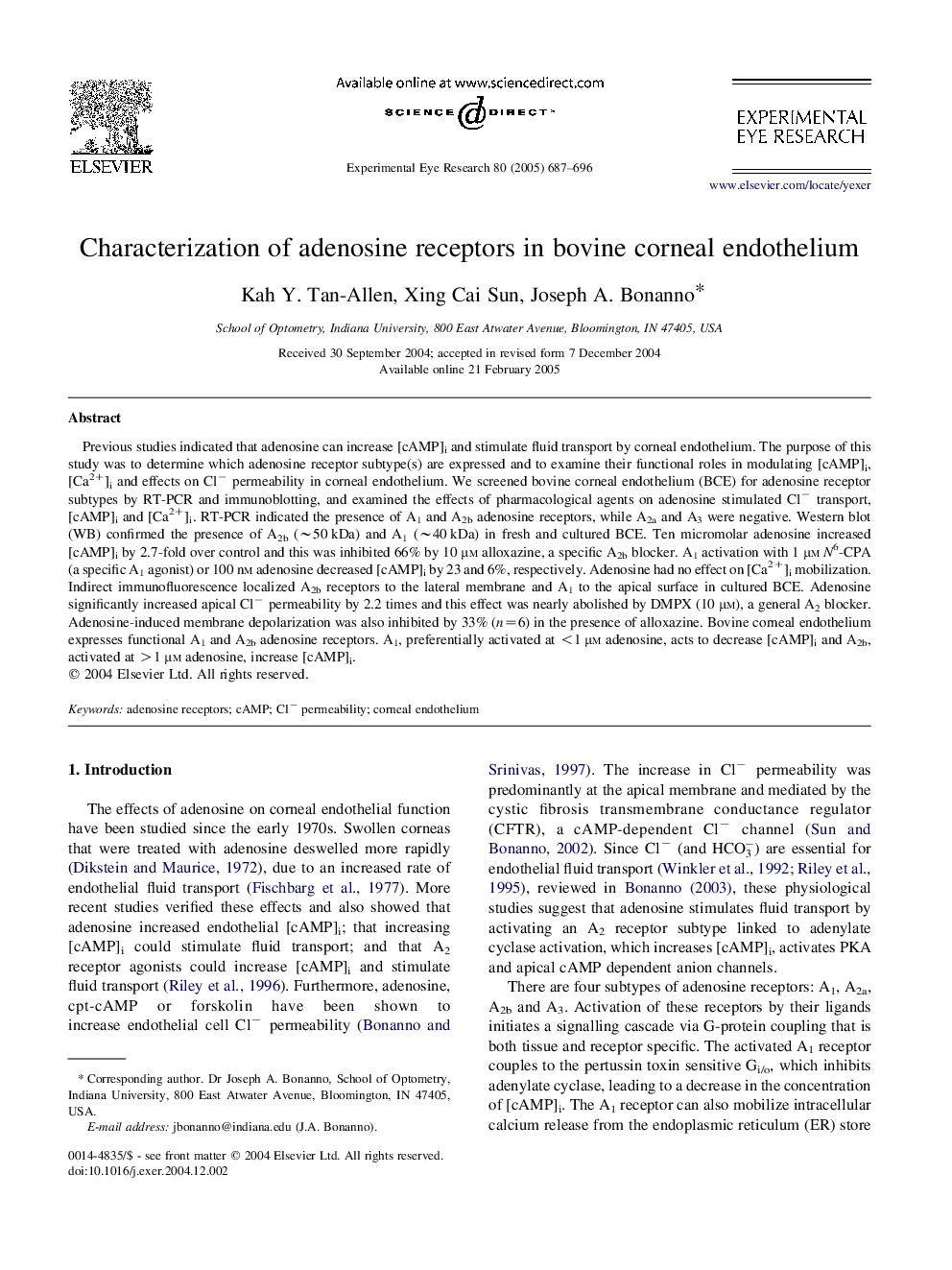| Article ID | Journal | Published Year | Pages | File Type |
|---|---|---|---|---|
| 9341506 | Experimental Eye Research | 2005 | 10 Pages |
Abstract
Previous studies indicated that adenosine can increase [cAMP]i and stimulate fluid transport by corneal endothelium. The purpose of this study was to determine which adenosine receptor subtype(s) are expressed and to examine their functional roles in modulating [cAMP]i, [Ca2+]i and effects on Clâ permeability in corneal endothelium. We screened bovine corneal endothelium (BCE) for adenosine receptor subtypes by RT-PCR and immunoblotting, and examined the effects of pharmacological agents on adenosine stimulated Clâ transport, [cAMP]i and [Ca2+]i. RT-PCR indicated the presence of A1 and A2b adenosine receptors, while A2a and A3 were negative. Western blot (WB) confirmed the presence of A2b (â¼50 kDa) and A1 (â¼40 kDa) in fresh and cultured BCE. Ten micromolar adenosine increased [cAMP]i by 2.7-fold over control and this was inhibited 66% by 10 μm alloxazine, a specific A2b blocker. A1 activation with 1 μmN6-CPA (a specific A1 agonist) or 100 nm adenosine decreased [cAMP]i by 23 and 6%, respectively. Adenosine had no effect on [Ca2+]i mobilization. Indirect immunofluorescence localized A2b receptors to the lateral membrane and A1 to the apical surface in cultured BCE. Adenosine significantly increased apical Clâ permeability by 2.2 times and this effect was nearly abolished by DMPX (10 μm), a general A2 blocker. Adenosine-induced membrane depolarization was also inhibited by 33% (n=6) in the presence of alloxazine. Bovine corneal endothelium expresses functional A1 and A2b adenosine receptors. A1, preferentially activated at <1 μm adenosine, acts to decrease [cAMP]i and A2b, activated at >1 μm adenosine, increase [cAMP]i.
Related Topics
Life Sciences
Immunology and Microbiology
Immunology and Microbiology (General)
Authors
Kah Y. Tan-Allen, Xing Cai Sun, Joseph A. Bonanno,
